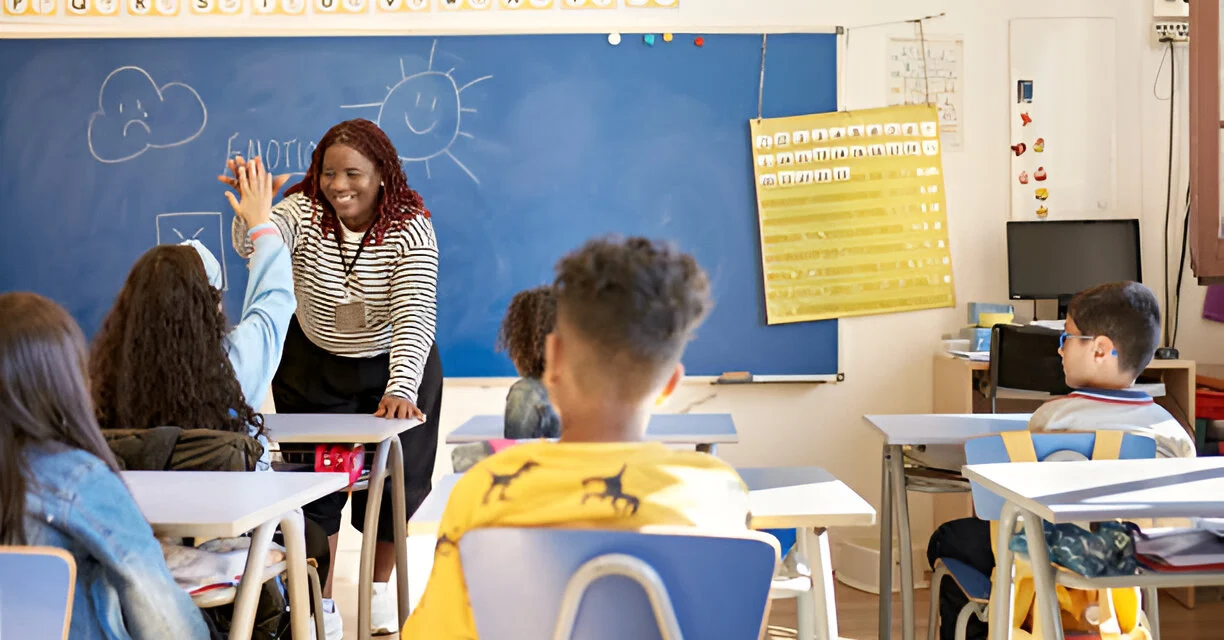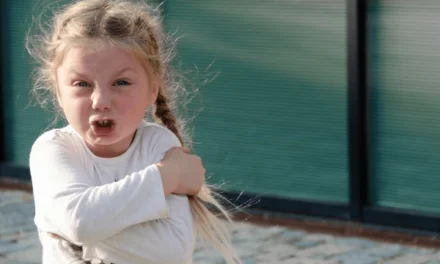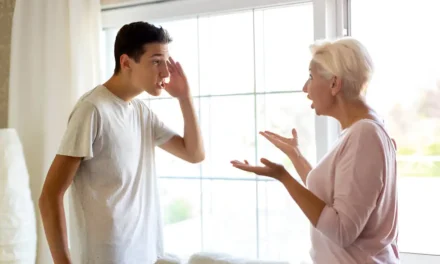As an educator, I’ve seen how trauma affects a child’s behavior and learning. It’s sad to see students struggle with self-control, negative thoughts, and bad social skills because of their past1. But, I’ve found that the right strategies can help create a supportive and predictable place for them to grow.
In this article, I’ll share six easy ways to cut down on negative behaviors and help your students succeed. By knowing why these behaviors happen and using proven methods, you can build a classroom where everyone feels safe and valued. Let’s explore how we can positively change our students’ lives.
Key Takeaways
- Up to two-thirds of U.S. children have experienced serious childhood trauma, which can impact their behavior and learning1
- Addressing the underlying function of a behavior, rather than reacting with anger or frustration, is key to creating positive change2
- The stages of change model can help teachers support students through the process of behavior modification2
- Trauma-sensitive strategies and building positive relationships are essential for creating a safe, predictable environment1
- Consistent implementation of evidence-based practices across all settings is crucial for sustainable behavior change3
Providing a Fresh Start Each Day
As an educator, it’s key to know that negative behaviors often have a purpose for students. They might want something or just to get attention4. Understanding this can help you manage classroom disruptions better4.
Changing behavior takes time4. By giving students a chance to make good choices daily, you encourage better behavior. This leads to lasting change4.
It’s important not to take challenging behaviors personally4. Start fresh every day and build positive relationships. This helps create a better learning space4.
Knowing students have bad days and giving them a clean slate can really help4. This shows you’re flexible and caring. It makes the classroom a positive place4.
Offering a fresh start and predictability helps with negative behaviors4. This builds trust and engagement. It sets the stage for lasting change4.
Maintaining a Positive Mindset
Teaching can be tough, but staying positive is crucial5. Focus on the good moments. This makes the job rewarding5.
Even experienced teachers face many emotions5. Dealing with different personalities can be tough. But staying positive helps you overcome these challenges5.
Don’t let negative feelings hold you back5. Instead, find ways to stay motivated. Keep notes from students to keep your enthusiasm up5.
Approach each day with a positive attitude5. This creates a supportive learning environment for your students. It also helps you stay in teaching longer5.
The “Fresh Start Effect”
Research shows a “fresh start effect” in management science6. People are more likely to chase their dreams at new beginnings6.
Google searches and gym records show this effect too6. New beginnings give us a fresh view of life. They encourage us to go after our dreams6.
As a teacher, use this effect to help students create predictability and make positive choices6. Offer them a chance to start anew. This motivates them to behave better and reach their goals6.
Self-control can change from day to day6. By using the “fresh start effect,” you help students stay focused. This leads to lasting behavior change6.
Understanding the Function of Behavior
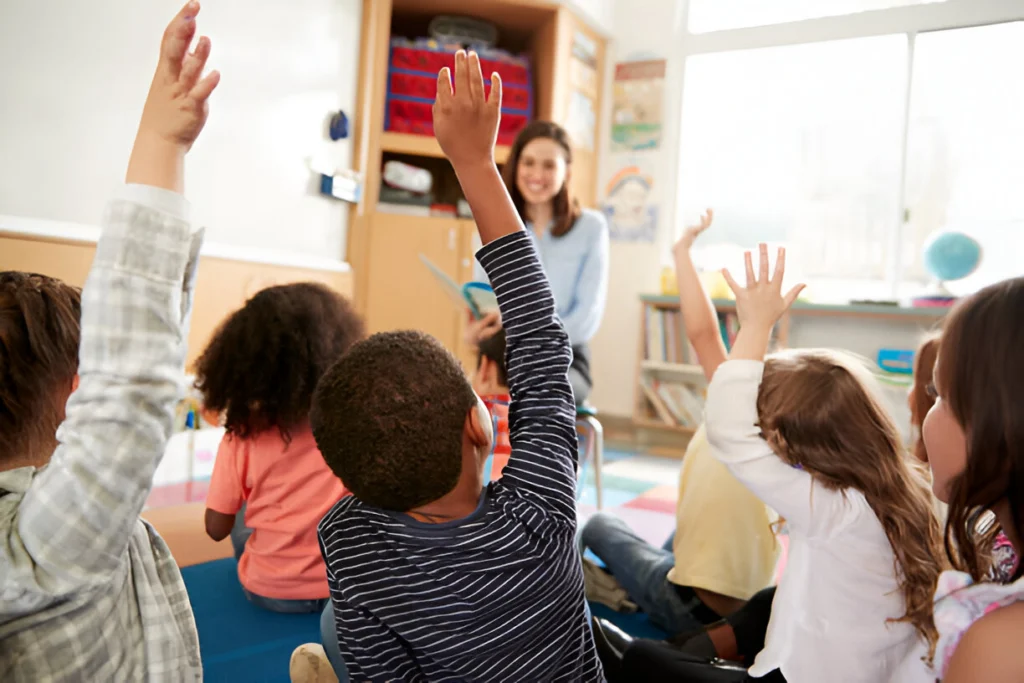
Teachers need to know why students act out in class7. There are four main reasons: attention, escape, access, and sensory needs. Knowing this helps teachers respond better, not just get angry.
For instance, some students cry or throw tantrums to get attention7. Others try to escape when they find something hard7. Some want things they like, and others need to move or feel certain ways7.
The ABCs of behavior are important7. What happens before and after a behavior can change it. Teachers need to understand this7.
Teachers can help by teaching new ways to get attention or by making tasks easier8. They can also give choices or activities that meet sensory needs8. This makes learning better for everyone9.
| Function of Behavior | Description | Example Behaviors | Strategies |
|---|---|---|---|
| Attention | Seeking adult or peer attention, positive or negative | Crying, tantrums | Teach alternative attention-seeking methods, provide one-on-one attention daily |
| Escape | Avoidance of tasks or interactions perceived as unpleasant | Refusing to participate in instructional activities | Simplify tasks, increase access to rewards, offer choices |
| Tangible | Seeking access to preferred items or activities | Grabbing toys, interrupting to request preferred items | Teach appropriate communication for item requests, offer choices and transition warnings |
| Sensory | Seeking internal pleasure or removal of discomfort | Jumping, hand-flapping, rocking | Redirect inappropriate actions, teach socially acceptable alternatives |
“By recognizing the function of a student’s negative behaviors, teachers can develop more effective strategies to address them.”
The Stages of Change Model
Teachers need to know about the Stages of Change Model to tackle negative behaviors in class. This model, also known as the Transtheoretical Model (TTM), outlines the steps of behavior change10. By understanding where a student is, teachers can offer the right support at each stage. This helps students make lasting positive changes.
The Six Stages of Change
- Precontemplation: Students here don’t see the problem or don’t want to change, with no plans to act soon10.
- Contemplation: Students know the problem and think about changing, but they’re still unsure10.
- Preparation: Students are set to take action and plan to do so in the next 30 days10.
- Action: Students have recently changed and are working hard to keep the new habits10.
- Maintenance: Students have kept their change for over 6 months and aim to avoid slipping back10.
- Termination: Students are sure they won’t go back to old ways and are confident in their new habits10.
Knowing the details of each stage helps teachers tailor their support. This ensures students get the right help as they work on behavior change11.
The Stages of Change Model helps teachers understand the complex process of behavior change. It’s especially useful for dealing with negative behaviors in class11. By meeting students’ needs at each stage, teachers can create a supportive space. This space encourages and motivates students to make lasting, positive changes1011.
Expect Unexpected Responses
As educators, we face the challenge of students with trauma histories. They might react in ways we don’t expect. It’s key to understand their reactions and not take them personally12. Verbal outbursts can sometimes lead to physical aggression, showing the need to calm situations down verbally12.
Knowing that simple directions can upset these students helps us respond with patience and empathy. This way, we can better support them.
Trauma-Sensitive Strategies
Using trauma-sensitive strategies in class can help avoid triggering events for students with trauma12. Trauma can cause unpredictable behavior. Understanding this can help us predict and prevent future problems12.
Keeping a calm and patient tone helps avoid making situations worse. It makes our classroom a safer and more supportive place for our students12.
| Effective Trauma-Sensitive Strategies | Benefits |
|---|---|
| Providing clear structure and predictable routines | Helps students feel safe and reduces anxiety |
| Offering sensory breaks and regulation tools | Supports self-regulation and emotional management |
| Collaborating with mental health professionals | Ensures a comprehensive, trauma-informed approach |
By using these strategies, we can make our classrooms better for learning. This reduces Negative Behaviors and Expect Unexpected Responses from our students.
“Trauma history can lead to unpredictable actions, and understanding the root cause can assist in predicting behavior and preventing future crises.”12
Employ Thoughtful Interactions
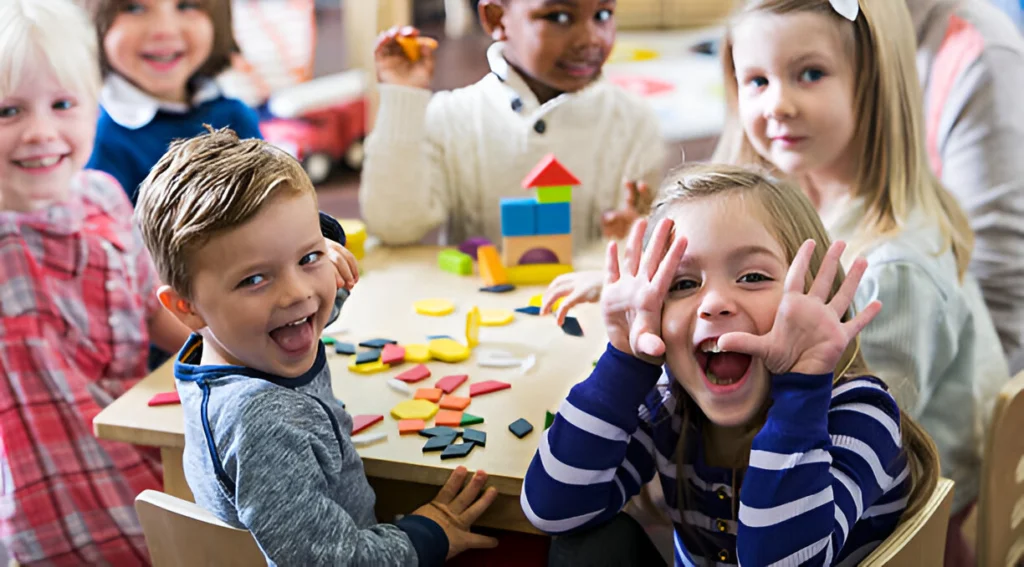
As an educator, your interactions with students are key. They can greatly affect their behavior and learning. Using thoughtful strategies, you can lower bad behaviors and make learning better13.
Building Trust and Understanding
How you give directions or talk to students matters a lot. Teachers like Ms. Carlton, who offer choices and explain things clearly, build trust. This helps lower bad behaviors13. On the other hand, Ms. Finch’s strict way can cause more problems13.
Students with trauma may act differently. By understanding their feelings and showing empathy, you make them feel safe. This is vital for helping these students13.
“The teacher is a significant factor in every interaction with a student. By changing the way they give directions or respond, teachers can reduce problematic behavior.”
Using strategies like listening well, asking questions, and noticing others’ feelings makes you a better communicator. This is important for leaders14.
Building trust and using the right ways to interact are key for helping traumatized students. Thoughtful interactions can help reduce bad behaviors and encourage growth in your students13.
Negative Behaviors and Predictability
Creating a safe space for students is crucial, especially for those with trauma. Visual schedules and predictable positive attention help reduce negative behaviors.
Promoting a Sense of Safety
Teachers’ consistency makes students feel safe at school15. Schools focus on physical, psychological, and emotional safety15. Clear expectations and routines help students feel secure and manage their behavior better.
It’s important to balance positive and negative consequences for behavior16. But, some students might see negative consequences as a reward16. Teachers should discipline with care and use negative consequences to teach, not punish16.
Fostering Predictability
Consistent routines build trust and safety for students15. Daily schedules and clear expectations are key15. Previewing changes and using positive attention helps students with trauma feel secure.
Understanding trauma’s impact on behavior is vital for managing classrooms15. Traumatized students often struggle to learn due to hyperarousal15. Clear expectations and consistent consequences help them feel safe and focus on learning15.
| Negative Behaviors | Predictability Strategies |
|---|---|
| Physical aggression, threats, sexual actions, or hurtful words that lead to fights | Using visual schedules to preview the class or school day |
| Derogatory statements that negatively affect a student’s sense of self and belonging | Previewing any changes to the normal routine ahead of time |
| Behavioral expectations or corrections that harm a student’s sense of self and belonging | Providing predictable positive attention at consistent, scheduled times |
Trauma-responsive classroom management supports students academically, socially, and emotionally15. Expectations, procedures, and consequences are key to a safe learning environment15.
Importance of Relationship-Building
Building strong relationships with students is key to managing bad behaviors17. Studies show that good teacher-student relationships lead to better grades and fewer problems in school17. Being accepted by peers boosts a student’s sense of belonging and grades, especially in math17.
Good friendships help students grow socially and emotionally. But, bad relationships can make students feel left out and unhappy17.
Teachers can use many ways to build these important bonds18. Meeting a child’s needs consistently helps them feel secure and develop important skills18. Positive interactions with kids make their emotional connections stronger18.
Teachers can show love and care by greeting students, talking about their interests, and checking in with them one-on-one. This builds trust and helps teachers understand and support their students better.
By letting students share their feelings and needs, teachers can create stronger bonds and a sense of belonging in schools.
| Relationship-Building Strategies | Benefits |
|---|---|
| Greeting students daily | Builds trust and rapport |
| Engaging in non-academic conversations | Helps teachers understand students better |
| Making time for individual check-ins | Fosters a sense of connectedness |
“Social-emotional learning (SEL) helps students learn to manage emotions, communicate respectfully, and work collaboratively, setting the foundation for positive relationship building in K-12 settings.”17
By focusing on building relationships, teachers can create a supportive place for learning. This helps students do well in school and feel good about themselves.
Accommodations and Shared Strategies
As educators, we have a big role in tackling negative behaviors in class. One key strategy is to share successful interaction strategies and accommodations with our colleagues19. This helps us work together to support students with tough behaviors.
Take Ms. Carlton, for example. She had great ways to manage Trevor, but didn’t share them with Ms. Finch. If she had, Ms. Finch could have helped Trevor more consistently, maybe even reducing his bad behaviors.
Sharing our best practices ensures everyone working with a student knows what works. This teamwork helps make a predictable and supportive place for students with negative behaviors.
| Accommodation | Description |
|---|---|
| Brief weekly meetings | 10-minute meetings to monitor issues before they become serious19 |
| Modifying instructions and feedback | To improve employee performance19 |
| Quiet workspaces | Fewer distractions to enhance employee well-being19 |
| Flexible job scheduling | To accommodate medication effects or medical appointments19 |
| Checklist for each task | Assist in quality control and attention to detail19 |
| Frequent breaks | Support employee well-being and concentration19 |
By using these accommodations and shared strategies, we can make learning better for students with negative behaviors1920.
Addressing Trauma and Creating Safety
Trauma can deeply affect people, making them feel unsafe and unable to connect with others21. It’s vital to create safe spaces where healing and growth can happen. This helps individuals overcome their trauma and build resilience.
Dr. Judith Herman says the first step in healing from trauma is feeling safe21. This involves learning to soothe oneself and manage emotions. It can take a long time, depending on the trauma’s severity21.
It’s also important to feel safe in relationships and society21. Marsha Linehan’s Dialectical Behavior Therapy (DBT) helps people end harmful relationships. This is a big step towards creating a supportive environment21. We must also focus on making communities and institutions safe for healing21.
In therapy, feeling safe is key to building trust and working through trauma21. Without safety, therapy can be harmful. This shows how crucial a safe environment is for effective trauma work21.
Creating personal safety is essential after trauma21. This includes feeling safe in relationships and society, as well as in therapy. This helps individuals regain control and stability, leading to deeper healing.
Trauma can also limit one’s beliefs about the future22. It can make people fear for their safety or doubt the occurrence of normal life events22. Initial reactions to trauma include feeling exhausted, confused, and anxious22. Traumatic stress can make people feel overwhelmed or numb, disconnecting emotions from thoughts and memories22.
It’s crucial to address trauma’s effects and create safe environments for healing23. Trauma-Informed Care in Behavioral Health Services highlights the trauma’s impact on individuals23. By focusing on safety and supporting individuals through recovery, we help them regain their sense of self and well-being.
Positive Reinforcement and Motivation
Teachers need to use positive reinforcement and motivation to cut down on bad behaviors in class24. B.F. Skinner showed us different kinds of reinforcement, like positive and negative24. Positive reinforcement is when you add something good after someone does something right24.
By focusing on good behaviors and motivating students, teachers can help them keep improving25. When a behavior leads to something positive, it’s more likely to happen again25. This is how operant conditioning works, making behaviors stronger with positive rewards.
Celebrating Successes and Reminding Students of Their Abilities
Teachers should celebrate successes and remind students of their goals and abilities. This encouragement helps students want to behave better on their own25. Positive reinforcement makes a behavior more likely to happen again by adding something good.
- 24 Social reinforcers involve positive encouragement from others to reinforce certain behaviors.
- 24 Different types of reinforcers such as natural, token, social, and tangible can be used to reinforce positive behaviors in children.
- 25 Positive reinforcement can strengthen both desirable and undesirable behaviors if used incorrectly.
- 25 Positive reinforcement can be a powerful learning tool when used appropriately in teaching new behaviors or modifying existing behaviors.
By focusing on Positive Reinforcement and Motivation, teachers can create an environment that supports students in reducing Negative Behaviors and maintaining positive progress.
Consistency and Collaboration
Changing negative behaviors in students needs a team effort. Using the same strategies everywhere helps students feel safe and secure26.
Teachers, counselors, and principals must work together. Sharing what works and planning together helps support students better26.
The Importance of Consistency
Using the same rules everywhere helps students behave better. This makes the environment predictable, reducing stress and making students feel safe26.
Fostering Collaboration
Teamwork is key to helping students change for the better. By sharing ideas and working together, the team can offer better support26.
| Factors to Consider in Teamwork Dynamics |
|---|
| Employee contribution during meetings |
| Frequency of miscommunications |
| Prevalence of groupthink |
| Workload distribution among team members |
| Individual versus collective references in project discussions |
| Missed milestones becoming a pattern |
| Clarity on priorities and roles |
| Conflicts among staff members |
| Nervousness to give or accept feedback |
| Reluctance to take responsibility or admit mistakes |
| Lack of empathy among team members |
| High turnover rates |
Watching these signs helps teams improve their work together. This way, they can tackle problems and boost teamwork26.
In the end, working together and using the same methods everywhere is crucial. This way, educators can make a better, more supportive place for students to grow26.
Professional Development and Training
Offering professional development and training for teachers is a great way to help them manage negative behaviors. It also helps in creating a supportive learning space27. Teachers look for learning that is practical, fun, and relevant27.
In 2017, a student-led training session was held. It was part of a staff meeting and focused on building classroom community and boosting student confidence27. The session was short, lasting under five minutes, and included a skit on data walls27. Teachers were asked to think about what they could apply from the training, leading to positive changes in their teaching27.
But, the need for good professional development and training is still there. Recent data shows that over 70% of teachers have seen more disruptions in class than before28. Also, 87% of schools have seen more misconduct and disrespect28. Sadly, only about a third of teachers feel ready to handle these issues28.
This lack of training has led to teacher shortages. In the 2020-2021 school year, 44 states had teacher shortages. This number jumped to 48 states in the 2021-2022 year28. Moreover, 55% of teachers are thinking about leaving the profession28. Quality professional development can help keep teachers in the field28.
By investing in professional development and training, schools can give teachers the tools they need. This helps in managing negative behaviors and making learning better for everyone2728.
Conclusion
Throughout this article, you’ve learned how to help students succeed. By starting fresh each day and understanding why they behave certain ways, you can guide them. Addressing issues like jumping to conclusions helps create a safe and trusting classroom29.
Changing behavior takes time and effort, not just in class but everywhere. Working with your colleagues and getting better at your job helps a lot30.
Being an educator is more than just teaching. It’s about building relationships, helping students grow strong, and helping them reach their goals. By following these ideas and using them in your teaching, you can really change lives. Keep doing what you’re doing, it’s making a big difference.
FAQ
What is the importance of providing a fresh start each day for students?
How can understanding the function of a student’s behavior help teachers address negative behaviors?
How can the stages of change model help teachers support students through behavior change?
Why is it important for teachers to understand and not take personally the unexpected responses of students with trauma histories?
How can teachers employ thoughtful interactions to reduce problematic behavior?
What strategies can help create predictability and a feeling of safety for students, reducing negative behaviors?
Why is building positive relationships with students essential for managing negative behaviors?
How can sharing successful interaction strategies and accommodations help address negative behaviors?
How can positive reinforcement and motivation help support students’ behavior change?
Why are consistency and collaboration among staff members crucial for addressing negative behaviors and supporting behavior change?
How can professional development and training opportunities for teachers help improve their ability to address negative behaviors and create a supportive learning environment?
Source Links
- Trauma-Informed Teaching Strategies
- Understanding the Functions of Behavior in ABA – How to ABA
- Top 10 Used Behavioral Strategies in 2020
- What should teachers understand about effective classroom behavior management?
- Educators: Make Every Day a Fresh Start (Opinion)
- 2014_Mgmt_Sci.pdf
- The Four Functions of Behavior: Understanding Your Child’s Actions
- How to Better Understand the Four Functions of Behavior | Insights to Behavior
- Understanding the Functions of Behavior | Kurtz Psychology
- The Transtheoretical Model (Stages of Change)
- Stages of Change Theory – StatPearls
- Expecting the Unexpected: Responding to Unpredictable Behavior | Crisis Prevention Institute (CPI)
- Special Education Classroom Behavior Management Strategies for K12 | Insights to Behavior
- 7 Tips For Being More Thoughtful And Less Reactive When Communicating
- Consistency And Predictability | TREP-educator | Trauma Responsive Educational Practices
- Fair and predictable consequences – Supporting Positive Behaviour
- The Importance of Relationships and How Social Emotional Learning Supports Them
- Accommodation strategies – Workplace Strategies for Mental Health
- Managing co-worker reactions to accommodation – Workplace Strategies for Mental Health
- Why Healing Trauma Starts With Creating Safety (& How to Feel Safe Again)
- Understanding the Impact of Trauma – Trauma-Informed Care in Behavioral Health Services
- Trauma-Informed Care: A Sociocultural Perspective – Trauma-Informed Care in Behavioral Health Services
- Positive and Negative Reinforcement Examples
- Positive Reinforcement Can Help Favorable Behaviors
- 12 Warning Signs of Poor Collaboration – Emergenetics
- Tired of the Same Old Professional Development? Let Students Lead – EdSurge News
- Teachers Are Not Prepared for Increasing Challenging Behaviors
- Negative Thought Patterns: Jumping to Conclusions can lead to Depression – Oak Health Foundation
- Jumping to Conclusions: Learn How to Stop Making Anxiety-Fueled Mental Leaps — Therapy Now

